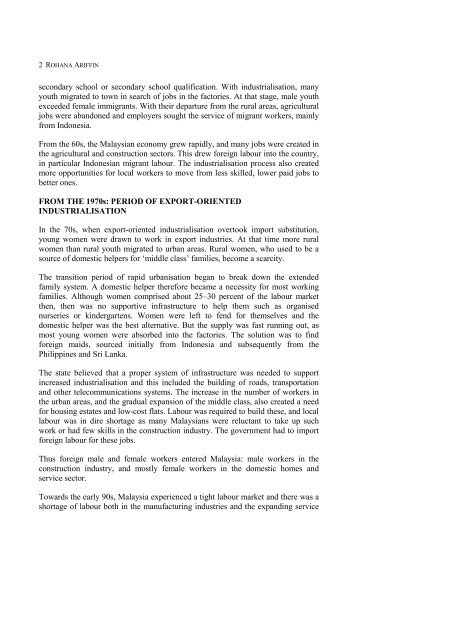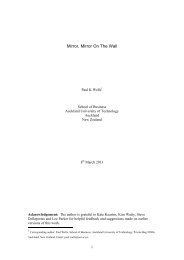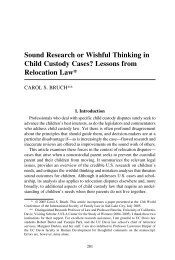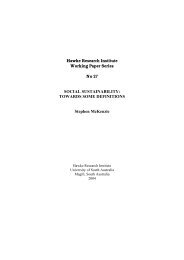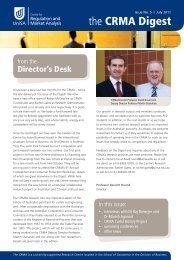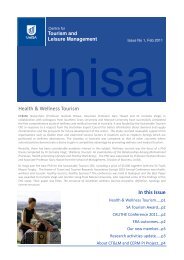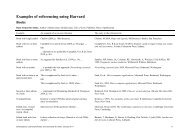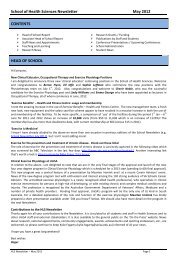Domestic Work and Servitude in Malaysia - University of South ...
Domestic Work and Servitude in Malaysia - University of South ...
Domestic Work and Servitude in Malaysia - University of South ...
You also want an ePaper? Increase the reach of your titles
YUMPU automatically turns print PDFs into web optimized ePapers that Google loves.
2 ROHANA ARIFFIN<br />
secondary school or secondary school qualification. With <strong>in</strong>dustrialisation, many<br />
youth migrated to town <strong>in</strong> search <strong>of</strong> jobs <strong>in</strong> the factories. At that stage, male youth<br />
exceeded female immigrants. With their departure from the rural areas, agricultural<br />
jobs were ab<strong>and</strong>oned <strong>and</strong> employers sought the service <strong>of</strong> migrant workers, ma<strong>in</strong>ly<br />
from Indonesia.<br />
From the 60s, the <strong>Malaysia</strong>n economy grew rapidly, <strong>and</strong> many jobs were created <strong>in</strong><br />
the agricultural <strong>and</strong> construction sectors. This drew foreign labour <strong>in</strong>to the country,<br />
<strong>in</strong> particular Indonesian migrant labour. The <strong>in</strong>dustrialisation process also created<br />
more opportunities for local workers to move from less skilled, lower paid jobs to<br />
better ones.<br />
FROM THE 1970s: PERIOD OF EXPORT-ORIENTED<br />
INDUSTRIALISATION<br />
In the 70s, when export-oriented <strong>in</strong>dustrialisation overtook import substitution,<br />
young women were drawn to work <strong>in</strong> export <strong>in</strong>dustries. At that time more rural<br />
women than rural youth migrated to urban areas. Rural women, who used to be a<br />
source <strong>of</strong> domestic helpers for ‘middle class’ families, become a scarcity.<br />
The transition period <strong>of</strong> rapid urbanisation began to break down the extended<br />
family system. A domestic helper therefore became a necessity for most work<strong>in</strong>g<br />
families. Although women comprised about 25–30 percent <strong>of</strong> the labour market<br />
then, then was no supportive <strong>in</strong>frastructure to help them such as organised<br />
nurseries or k<strong>in</strong>dergartens. Women were left to fend for themselves <strong>and</strong> the<br />
domestic helper was the best alternative. But the supply was fast runn<strong>in</strong>g out, as<br />
most young women were absorbed <strong>in</strong>to the factories. The solution was to f<strong>in</strong>d<br />
foreign maids, sourced <strong>in</strong>itially from Indonesia <strong>and</strong> subsequently from the<br />
Philipp<strong>in</strong>es <strong>and</strong> Sri Lanka.<br />
The state believed that a proper system <strong>of</strong> <strong>in</strong>frastructure was needed to support<br />
<strong>in</strong>creased <strong>in</strong>dustrialisation <strong>and</strong> this <strong>in</strong>cluded the build<strong>in</strong>g <strong>of</strong> roads, transportation<br />
<strong>and</strong> other telecommunications systems. The <strong>in</strong>crease <strong>in</strong> the number <strong>of</strong> workers <strong>in</strong><br />
the urban areas, <strong>and</strong> the gradual expansion <strong>of</strong> the middle class, also created a need<br />
for hous<strong>in</strong>g estates <strong>and</strong> low-cost flats. Labour was required to build these, <strong>and</strong> local<br />
labour was <strong>in</strong> dire shortage as many <strong>Malaysia</strong>ns were reluctant to take up such<br />
work or had few skills <strong>in</strong> the construction <strong>in</strong>dustry. The government had to import<br />
foreign labour for these jobs.<br />
Thus foreign male <strong>and</strong> female workers entered <strong>Malaysia</strong>: male workers <strong>in</strong> the<br />
construction <strong>in</strong>dustry, <strong>and</strong> mostly female workers <strong>in</strong> the domestic homes <strong>and</strong><br />
service sector.<br />
Towards the early 90s, <strong>Malaysia</strong> experienced a tight labour market <strong>and</strong> there was a<br />
shortage <strong>of</strong> labour both <strong>in</strong> the manufactur<strong>in</strong>g <strong>in</strong>dustries <strong>and</strong> the exp<strong>and</strong><strong>in</strong>g service


